#film analysis
Text
regarding Dune Part 2: i am obsessed with its consistent visual theme of self-destruction. the shot of paul surrounded by his new followers seems triumphant - until the viewer remembers that each crysknife is made from a tooth of shai-hulud, and paul is standing in a circle of them, in the allegorical mouth of the worm. he orders a missile strike, and the viewer sees them fly directly through his head. every victory for the prophecy is a blow to paul himself; he's killing himself with every step he takes towards his destiny, and we know that already, and the film is screaming it, but it's a hell of a thing to watch it happen, isn't it?..
#dune#dune part 2#dune 2024#paul atreides#kwisatz haderach#shai hulud#dune 2#dune meta#film analysis#visual metaphors
4K notes
·
View notes
Text
The good news about Hbomberguy's plagiarism video for everyone who used to like James Somerton (I recently discovered him and hadn't got to any of the misogynistic shit yet), is that the queer analysis we liked is still out there - just not written by the thieving little shite. Great place to start is the playlist Harry created of plagarised or otherwise hardworking (but underrated) creators:
https://youtube.com/playlist?list=PLRGz5EMig3r2ZDgeGzwUlSz-PzF-L1Xu1&si=KqFfYA1NntIA3JG_
Also, as he's gonna send the profits to the writers James yoinked (without the twist) from, if you wanna help financially, you could always just... Put the video on in the background on repeat...
Tangentially, I met Harry a few years back at WorldCon in Dublin, and thanked him for his videos. He gave me a hug. The guy is just as sweet and lovely, and delightfully wild-eyed*, in real life.
*Seriously, the magnificent bastard has beautiful eyes.
#james somerton#hbomberguy#plagarism#youtube#video essay#queer#queer community#lgbtq+#lgbtqia#gay#film analysis
5K notes
·
View notes
Text
Providing a deep analysis of all Studio Ghibli films would be an extensive undertaking, considering the studio's rich and diverse catalog. However, I can highlight key themes and elements that are often present in their films.
1. **Spirited Away (2001):** Explores identity, environmentalism, and the spirit world. The bathhouse setting is a metaphor for societal structures.
2. **My Neighbor Totoro (1988):** Focuses on the innocence of childhood, the connection to nature, and the acceptance of mystery.
3. **Princess Mononoke (1997):** Tackles environmentalism, the clash between industrialization and nature, and the complexity of human relationships with the environment.
4. **Howl's Moving Castle (2004):** Examines themes of war, love, and transformation, set against a backdrop of magical realism.
5. **Grave of the Fireflies (1988):** A powerful anti-war film exploring the impact of conflict on two siblings during World War II.
6. **Kiki's Delivery Service (1989):** Focuses on self-discovery, independence, and the challenges of growing up.
7. **The Wind Rises (2013):** Tells the story of an aeronautical engineer against the backdrop of historical events, reflecting on creativity, passion, and the moral implications of invention.
8. **Porco Rosso (1992):** Explores themes of identity, war, and redemption through the tale of a World War I flying ace transformed into a pig.
9. **Castle in the Sky (1986):** Features an adventurous tale with themes of environmentalism and the consequences of human greed.
10. **Whisper of the Heart (1995):** Focuses on adolescence, dreams, and self-discovery, emphasizing the importance of pursuing one's passions.
These brief insights into a selection of Studio Ghibli films highlight their exploration of diverse themes, including environmentalism, identity, and the human connection with nature. Each film is a unique artistic expression that often combines fantasy with deep, thought-provoking narratives.
#studio ghibli#hayao miyazaki#spirited away#my neighbor totoro#princess mononoke#howl’s moving castle#grave of the fireflies#kiki's delivery service#the wind rises#porco rosso#castle in the sky#whisper of the heart#chatgpt#film#film analysis#film theory
1K notes
·
View notes
Text
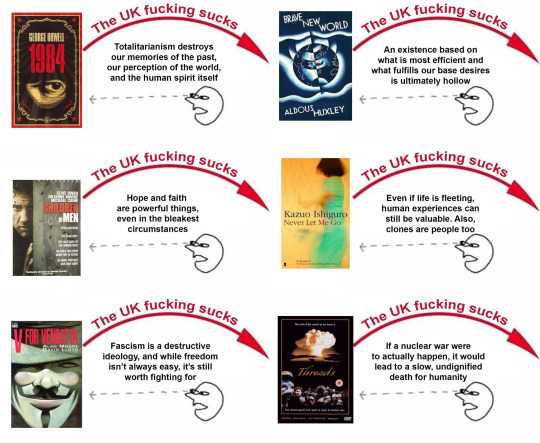
#united kingdom#britain#dystopia#film#1984#brave new world#children of men#never let me go#meme#v for vendetta#threads#threads movie#threads 1984#film analysis#1k
4K notes
·
View notes
Text
WARNING, LONG POST
Hello, welcome to the Bridgerton Season 3 trailer over-analysis corner. I am bingiessm--a film student that needs an outlet right now and wants to practice some film analysis--and am here to bring forth the FIRE/FLAME/CANDLE motif that was all over this trailer and I feel will be a HUGE theme throughout this season for Penelope and Colin (Polin).
So within the Polin context, let's look at each shot where a flame of a candle or lack thereof could represent their romantic interest in one another--and in particular the understanding/recognition of it.
This show is going all out putting candles EVERYWHERE--yes it was actual lighting in regency era, but you don't have to have it in the shot. That is a CHOICE. Also a choice to have it lit or not.
Also, "I burn for you" anyone?
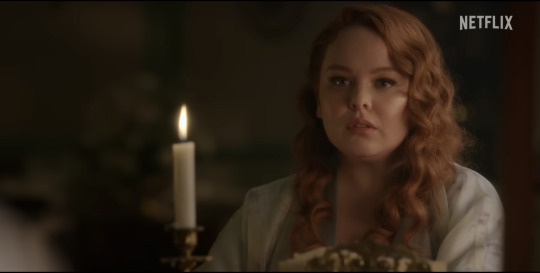
FIRST SHOT: somewhat obvious but considering the context of both the mirror as well as other future shots within this trailer, this flame represents the feelings Penelope has for Colin, that she is well aware of and has held for a long while.
I also just have an inkling that she is seeing herself differently in this moment (feeling something for the first time possibly)--the way Nicola looks feels shocked/contemplative, but not scared as if it might be Whistledown-related.

SECOND SHOT: they are outside, talking about Penelope being a "lost cause." WHY IS THERE AN UNLIT CANDLE IN A MARKET STALL, if not to represent some unrealized feelings on Colin's part? It is also on his side of the frame. This is similar to this next one, both of which I believe are earlier in the season, as this is the start of him "helping" her.
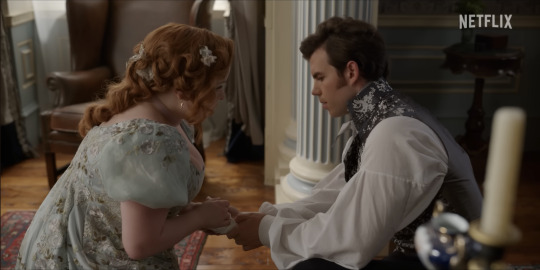
THIRD SHOT: Once again, right there on Colin's side of the frame, YOU DID NOT NEED THIS IN THE FOREGROUND. It was a CHOICE to put a candle there again. They could have not had it, yes the shot would have had less depth and this does give a better sense of the space, placing them in a corner of the room instead of in an open space--but they didn't need to make it another CANDLE.
Colin has not fully recognized his feelings for Penelope yet, though they have always been there, and these two shots demonstrate that lack of understanding/feeling, but one that is soon to come with an unlit candle.

FOURTH SHOT: this, in the timing of the trailer, does come before the third, but RIGHT THERE IS A MIRROR AND CANDLES. It is on Penelope's side of the frame, but Colin, the mirror, and candles are what is in focus. She might be center frame, but we are drawn to the light as well as the contrast in Colin's outfit. This could arguably be Penelope's perspective, her burning feelings as he compliments her--also her future (we all want that mirror scene).


FIFTH SHOT: a HUGE TURNING POINT--a small flame, barely noticeable suddenly burning brighter as we focus on Colin in the background. This is so clearly him realizing his feelings for Penelope. It is also at the midpoint/turning point of the trailer when there is a big tonal shift. There is no more talk of Colin helping Penelope, but a larger focus on his perspective of her (all the gazing), the idea of romance, as well as mention of Debling--his rival. It will be a turning point for Colin when Debling--an actual suitor vying for Penelope's hand--comes into the picture.
EDIT: Also going to add in, the candle is in a lantern--though that might have been easier to manage filming-wise--which could also represent him still holding back, especially with Debling in the picture.

SIXTH SHOT: This comes right after we hear Debling say "You look especially beautiful tonight, Miss Featherington." One of the many examples of Colin staring at the two of them, being jealous/worried. But right behind him? Oh, more candles. That they totally didn't need to have in the frame. Also, it doesn't look so much like a candle, but they are placed so close to one another that it looks like more of a flame. The lack of focus adds to this.
THEN WE GET TO THIS FINAL SEQUENCE--which imo is a FANTASY SEQUENCE

SEVENTH SHOT: Colin is coming from the darkness, with an unseen flame flickering directly behind him (small ember that he can't see).
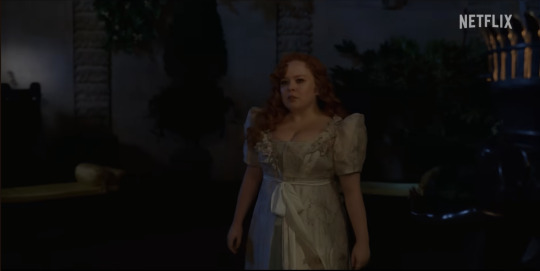
EIGHTH SHOT: Penelope, also coming out of the dark, but with another flame on (what in this sequence is) her side of the frame. Though it is somewhat hidden behind these bars--some rough patches/guarded emotions? (probably depends on what point this is in the series).
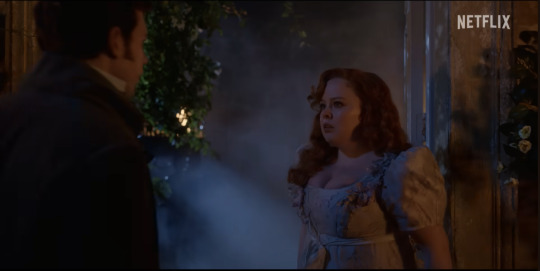
NINTH SHOT: Penelope, already in the light of these fires, Colin entering with the large burning flame in the background covered by some growth.
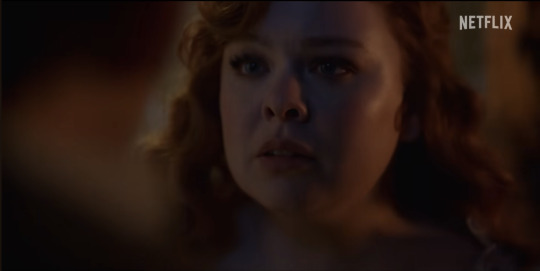
TENTH SHOT: Penelope, lit by these fires, breathing heavily. A very clear close-up with so much blur to focus just on her face.

ELEVENTH SHOT: Colin, with a flickering/burning flame literally right behind him, lit by these other fires, staring right at Penelope.
So this whole sequence, in my opinion, is a dream sequence. But, in terms of this flame representation, this is Colin realizing he has feelings for Penelope. We see the flickering from the unseen light behind him in the seventh shot build and become the flame right behind him in the eleventh. It feels so obviously representative of the season.
(The fog also seems to lift for him in this sequence, he comes out of the fog to Penelope--I could say more about this sequence and why I do think it is Colin's dream, mostly due to costuming and lighting and the fog as well)
______________________
And thus comes to a close my analysis/evidence of the FLAME/FIRE motif between Polin. I am cutting myself off here because this is a lot and I have an actual film shoot to plan. Thank you if you actually read all this. I love film analysis and Bridgerton is so fun and a stress reliever for me, so this was fun for me to write out.
Anyway, if any more of this fire/flame stuff comes up I might add on later.
TLDR: they are using fire and candles to represent the burning love between these two.
#bridgerton#bridgerton season 3#bridgerton netflix#bridgerton s3#colin x penelope#polin#penelope x colin#colin bridgerton#penelope featherington#film analysis#i'm bored and excited for this show so let me just do my silly goofy thing over here#I burn for you
298 notes
·
View notes
Text


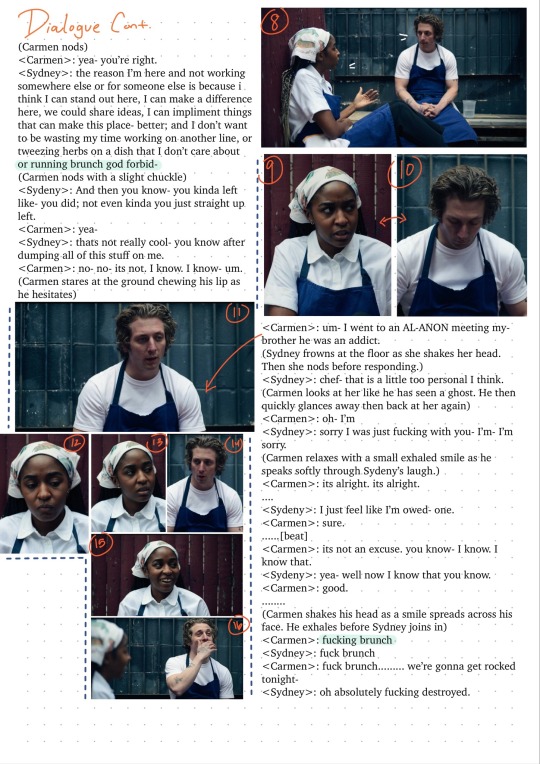


SYDCARMY scene analysis
Idk what else to put here but uhhhh plz don’t steal 😵
#the bear#carmy the bear#jeremy allen white#ayo edebiri#sydney the bear#syd adamu#sydney adamu#syd x carmen#syd x carmy#sydcarmy#film#film analysis#scene analysis#cinemetography#cinema#hulu tv#cinephile
257 notes
·
View notes
Text

I graduated with degrees in both theatre, and interpersonal communications. There is NO reason for Sabine to be facing in right now. Not at all. This scene we see from multiple angles, and multiple shots, which means it was a conscious decision for Sabine to take a few steps closer, and to turn her body towards Shin.
Sabine has been captured before—we see it in Rebels, when she’s captured by the Seventh Sister. In that instance, she defiantly turned away from her, and was in much more danger than she is with Shin right now (considering Baylan promised not to hurt her).
Whether or not shin/sabine becomes canon, it was a conscious acting, and directing decision to have her loosen up after a moment, move closer to, and turn towards Shin. Shin is only holding one of her wrists. It wouldn’t be uncomfortable for Sabine to keep facing forward, but instead she turns, and basically half loops her arm behind hers. Quite literally, this is how I turn and follow my own girlfriend, or how she would follow me. In fact, my first thought was how strikingly similar this positioning is to my own, actual, sapphic relationship.
No matter what becomes of them, the foundation is there, and it’s very, very telling in their body language—and I can say without a doubt, that was done intentionally.
#sabine wren#sabineshin#sabinewren#shin hati#shinhati#wolfwren#wrenwolf#sabine x shin#shin x sabine#shinbine#sabine wren x shin hati#shin hati x sabine wren#ahsoka spoilers#ahsoka speculation#Ahsoka episode 4#ahsoka series#theater#analysis#film analysis#communication styles#theater analysis
678 notes
·
View notes
Text
The entire 3-minute city ambiance scene from Ghost in the Shell (1995) is already one of the best moments in all of cinema imo, but I NEED to talk about my absolute favorite part from it:


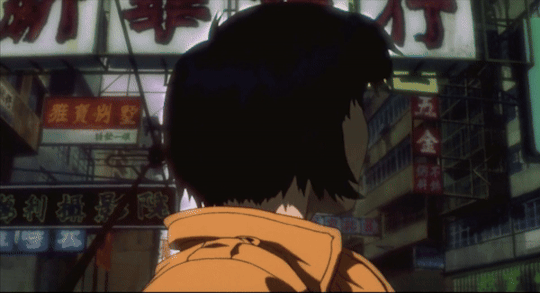
That brief moment when Major Kusanagi and a stranger with her exact same body model catch a glance at one another. How quickly the initial curiosity of seeing the doppelgänger turns into a feeling of unease as the boat carries her away.
She will never meet this stranger. She'll never know anything about her other than the simple reminder that every piece of her cybernetic body is not unique to her. There is no part of her other than her brain and all its memories that she has any true ownership of, and even that isn't immune to being hacked and potentially erased by outside forces. Despite being a part of a bustling city, all she can do is reflect on how utterly isolated she feels as a living being.
How can she possibly define her humanity when she herself is confined in the form of what is essentially a highly modified weapon? How can she relate to others when she has more in common with the mannequins on display in a shopping mall than with the any of the people walking the streets?
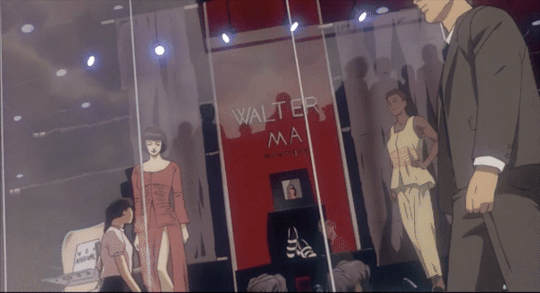
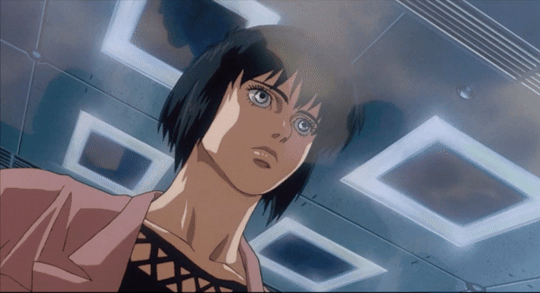
All of this inner turmoil at one’s own existence conveyed without a SINGLE word of dialogue spoken. Now that's the power of cinema if I've ever seen it!
#ghost in the shell#motoko kusanagi#animation#films#film analysis#it also reminds me heavily of one of my favorite lyrics from pink floyd's “echoes”#“strangers passing in the street - by chance two separate glances meet- and I am you and what I see is me”
152 notes
·
View notes
Text
something minor i noticed in “the spider within”
so they dropped a new spiderverse short, and after like the 5th watch i noticed smth interesting


you’ll notice the bed, miles, and the spider within are animated on twos (which means theres a new drawing on every other frame) while everything else around him is animated on ones.
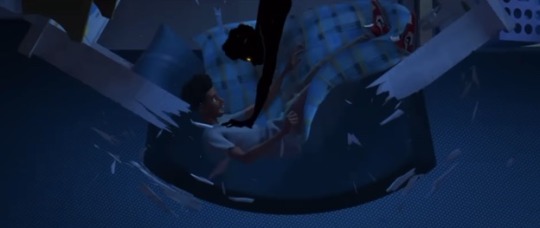
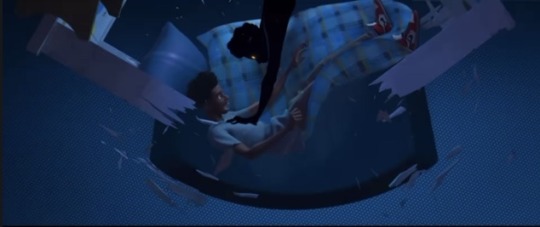
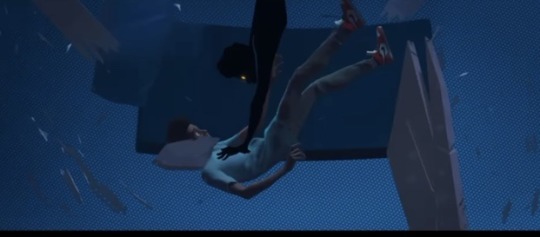
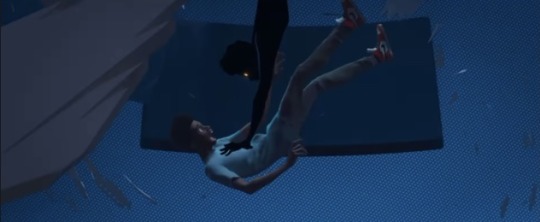
some of the broken pieces of the bed so start being animated on ones, assumedly to make it smoother, but miles and the spider within all remain on twos as miles is pushed out of his room.
this was a technique they used during into the spiderverse as well. when miles is learning how to be spiderman, he’s animated on twos while peter is animated on ones to represent the gap in their skill levels and also the difference in their universes. you can also see this technique used on a couple other spiderpeople in that movie. it creates an effect where you can just tell how unnatural their movements look in the world around them—even if you can’t quite pinpoint why—because they aren’t in the right universe. applying that idea to this scene, it shows miles’ disconnect from the world around him, from reality itself. we already know that what he was seeing and doing wasn’t real, since his dad didn’t react to any of the screaming or panicked crawling despite being a very alert person (demonstrated when he jumps at miles opening the door). it’s a very minor but interesting detail that further shows how out of touch with reality miles is as a result of his stress and trauma.
#into the spider verse#across the spiderverse#beyond the spiderverse#spiderverse#spiderman#miles morales#the spider within#film analysis#film stills#animation#animation analysis
136 notes
·
View notes
Text
"Late Night with the Devil" is a horror movie releasing tomorrow about a 70's late night show that has been highly anticipated by the indie film scene.
That is, until reviewers discovered that 3 title cards during the movie were AI generated art. (I couldn't tell myself when I saw the images, but if you look closely enough the telltale signs are there.) Now the same people who were championing it, are boycotting it. I'm not kidding.
These are from the same community that if you ask about a movie by Roman Polanski, Woody Allen, or Harvey Weinstein, talk about "separating the art from the artist." I'm not calling them hypocrites - these are apples to oranges - but the scale of the difference is very funny.
I'm not a fan of AI art, at least in its current incarnation, which promises to replace quality, adequately paid art with industrial slop at a mass scale. I get drawing a line and trying to defend the line.
If anything, it reminds me of tumblr and fan fiction communities. The way the sharpest knives in identity politics aren't out for Republicans and white men and grey tribers - no these days they are wielded against authors who have five intersectional flags but offend against a sixth. Because you can't hurt the mega-establishment, but you can hurt the queer POC author next door.
Which just makes the insular progressive communities hellscapes without proportionality.
No enemies but the in-in-in-in-in-group.
128 notes
·
View notes
Text
What Oppenheimer is about: A biopic about one man’s decision to sell his soul to the U.S. government, who then went on to live under intense surveillance and ostracization from the very same government
What Oppenheimer is about: A biopic about a man who sold his soul to the scientific community because he desired validation more than anything else, causing him to be ostracized from the scientific community
What Oppenheimer is about: A cautionary tale about what happens when you sell out with no consideration for the greater good of humanity
What Oppenheimer is about: A cautionary tale about trusting the U.S. government
What Oppenheimer is about: The emotional desolation that comes from becoming the very thing you set out to defeat
What Oppenheimer is about: To show people that if you don’t stand for anything, you’ll fall for anything
What Oppenheimer is about: To remind us that life is short and precious and one small group of white men can and will destroy anyone they want to any time they see fit
What Oppenheimer is about: An indictment of power imbalances, systemic racism, and rampant misogyny
What tumblr says Oppenheimer is about: U.S. government & military propaganda, the glorification of white men, excluding minorities on purpose
414 notes
·
View notes
Text
Can we talk about how bizarre our experience with the new pjo series is
A tiny essay on how this series is special.
Like. We're all super hyped because we know this series intrinsically that we forget that we know this show intrinsically
How bizarre is that?? We don't merely get spoilers on our dashes from episodes we haven't watched yet, we know what will happen at the end, at the end of the next season, in eight years
It's hilarious! It's rediculous! It's like Neil Gaiman would start an open Google doc so we could all watch as he wrote the next Good Omens episode! Only EVEN MORE
"aw this scene will look so cute when they are a couple in college" when the show itself has not even HINTED AT A CRUSH
"damn too bad Luke's the bad guy" WE SAY 3 EPISODES ON
Think about it, people! This is a fandom experience with no ship wars! No headcannons we desperately hope don't collide with cannon! We know every. Single. Thing. That will happen.
And we still watch it.
I have a point with this. Remember how Marvel movies would be 👉this close👈 to murdering an actor over spoilers? There's a great post here somewhere on how that's because of the low quality of modern day superhero movies. It's supposed to be a quick hit, a rush of dopamine and special effects and one liners exploding into colour until you walk out of the cinema so dazed you only remember days later that the movie itself wasn't actually that good. These movies aren't built for rewatching, or becoming cult classics. It's fast food. Delicious for the moment, satisfying a certain itch, but not wholesome or precious.
And this. This beautiful series launched with the full knowledge that almost the ENTIRE FANBASE know exactly what was coming, every step. What are premier day spoilers against years of finished arcs.
And still, we watch. We love. We laugh and cry and post about it.
I guess what I'm trying to say is #hopepunk. They think we don't need beautiful, nurturing adaptations? That they've wrecked our mental health so bad we can't concentrate on smth unless the special effects are forcefully grabbing our attention? That older things get forgotten as quickly as Tick Tock trends? They were wrong. We love, and we care. Not everything bows to the rules of fast production capitalism. We aren't a predicted consumer statistic.
We love Percy Jackson.
#pjo tv show#pjo series#pjo fandom#percy jackson#percy jackon and the olympians#annabeth chase#grover underwood#film analysis#luke castellan#series analysis#percabeth#hopepunk#pjo spoilers#percy jackson series spoilers#percy jackson spoilers#pjo tv spoilers
236 notes
·
View notes
Text



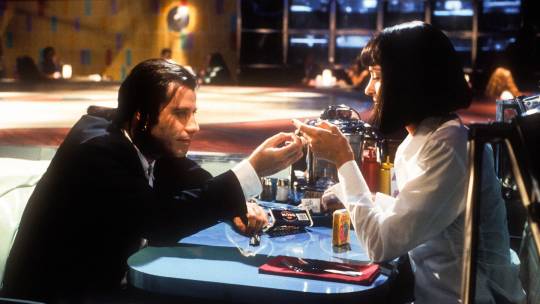



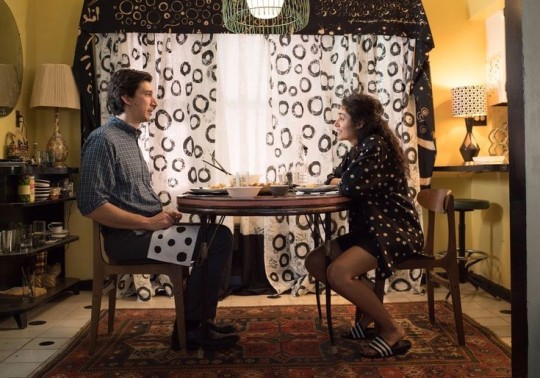
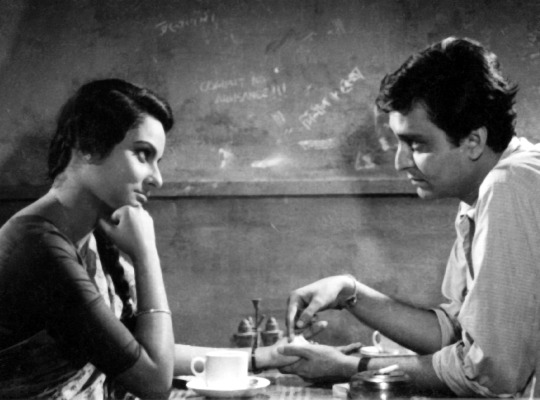
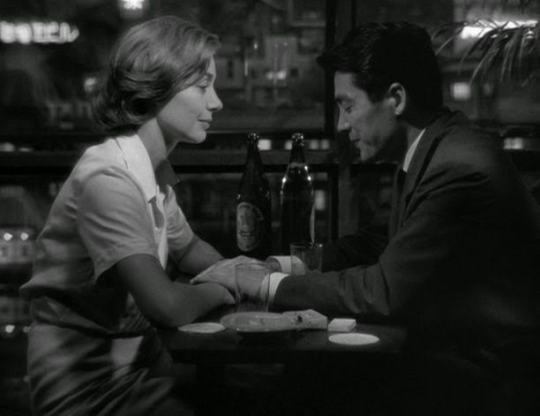
intimacy across the table—a thread
Four Adventures of Reinette and Mirabelle / Frances Ha / In The Mood For Love / Pulp Fiction / Modern Times / Nayak / Before Sunrise / Paterson / Kapurush / Hiroshima Mon Amour
#cinema parallels#four adventures of reinette and mirabelle#frances ha#in the mood for love#pulp fiction#modern times#nayak#before sunrise#paterson#kapurush#hiroshima mon amour#world cinema#film analysis#film journal#parallels#film blog
2K notes
·
View notes
Text
I know I’m like half a year late to recommend it, but The Sin Squad just put out a great video on how difficult it can be to find actual dog whistles and problematic material in fiction versus paranoid reading (aka gearing yourself up to find a reading to such things where they might not be intended)
youtube
I recommend it for everyone to at least give it a few minutes if your time because it’s some solid work and high quality analysis!
#lion king#film analysis#book analysis#literature#literature analysis#the sin squad#books#YouTube#literary analysis#fiction analysis#disney#parahumans#paranoid reading#dog whistles
148 notes
·
View notes
Text
So, a point of Oppenheimer is the moral stance Oppenheimer has on the bomb and how it shifts. It centres around the debate of if scientists should stop to consider the practical consequences of potential discoveries. Oppenheimer’s opinion shifts throughout the film.
Importantly, we are told early on in the film that in physics, theory is all well and good, but practically proving it is more important/impressive. This idea mirrors the moral debate of science’s place in the world. Oppenheimer’s relationship with the theoretical and practical elements of physics developed almost alongside his moral stance.
He begins with the stance of ‘we should pursue science for science-sake, the moral impacts of discoveries are not ours but the people who abuse it.’ This is seen by him, although still having his issues, still wanting the bomb dropped and not signing the petition. This aligns with his whole thing he has at the start of the film, in his younger years, unable to grasp the practical elements of physics, deeply invested, perhaps even intrenched, in the theoretical.
Then the bomb (both metaphorically and literally) drops.
He realises the consequences of the bomb dropping. He has visions of it and feels like the blood is on his hands as creator of the bomb. It mirrors his movement into the more practical element of the creation of the nuclear bomb. He now sees the practical consequences of his actions. He begins to consider his moral stance.
He then gets involved in the politics of nuclear energy. I think this is the big moment he realises what he is told at the start of the film, it’s all well and good in theory, but practicality is more important.
He now sees firsthand the practical consequences, via politics, science has on people lives and on the world at large. In physics, theory is all well and good, but what trumps it is practically proving it. Oppenheimer realises it applies to science’s place in the world, it’s all well and good the theory of scientific discovery being in a vacuum so should be developed no matter what, but in reality, like anything, other factors look in on science, we must consider its practical consequences, so caution must be exercised. Thus he opposes the hydrogen bomb.
TLDR: The theoretical-practical debate in physics as presented in the film directly mirrors Oppenheimer’s changing relationship with science and his shifting morals on nuclear weapons.
#oppenheimer#oppenheimer 2023#cristopher nolan#cillian murphy#robert downey jr#emily blunt#matt damon#cinema#films#film#film analysis#analysis#overanalysis#barbenheimer#oppenbarbie
386 notes
·
View notes
Text
The absolute poetry of the ABOSAS film you guys.
Reaper, the male tribute of District 11, using the very symbol of the Capitol to shelter/shield the bodies of the children they condemned to death from their prying eyes and deny them the spectacle that their captor's so desperately crave. All while daring them to punish him for being brave enough to act out against what they had planned, to actively seek to provide comfort and treat the fallen/fellow victims with dignity.
Only for this to unknowingly be echoed sixty four years later with Katniss. When she did the same for Rue. Providing that little girl's spirit a safe place to pass on from, giving her remains the respect they deserved after her life was snatched so violently from her. And unknowingly sparking the same ember, the one that barely managed to be put out sixty four years ago by Gaul, and breathing life into it until it became a flame.
#the hunger games#foxglovevibes#a ballad of songbirds and snakes#abosos movie and book#reaper ash#katniss everdeen#rue hunger games#film analysis
259 notes
·
View notes